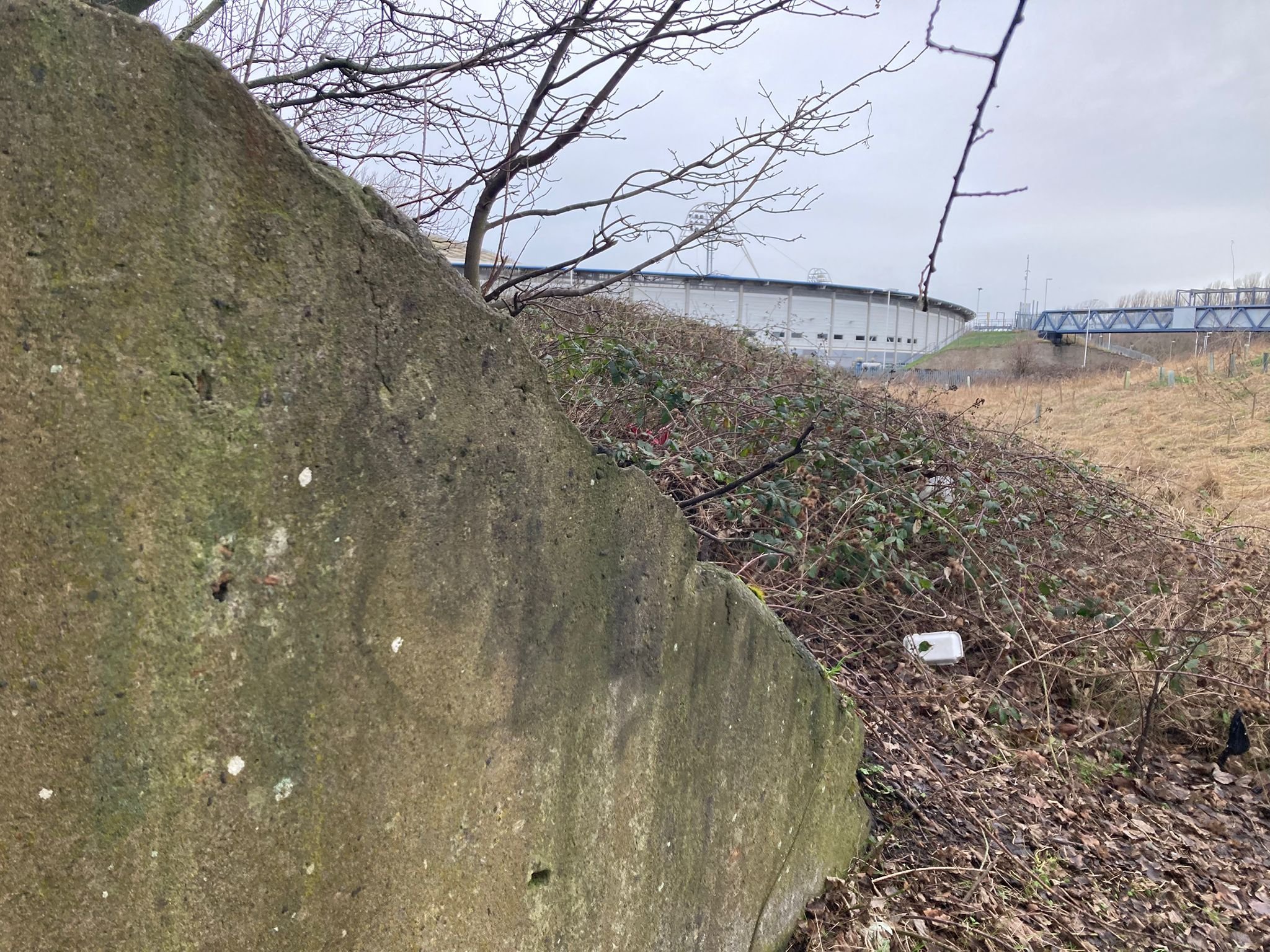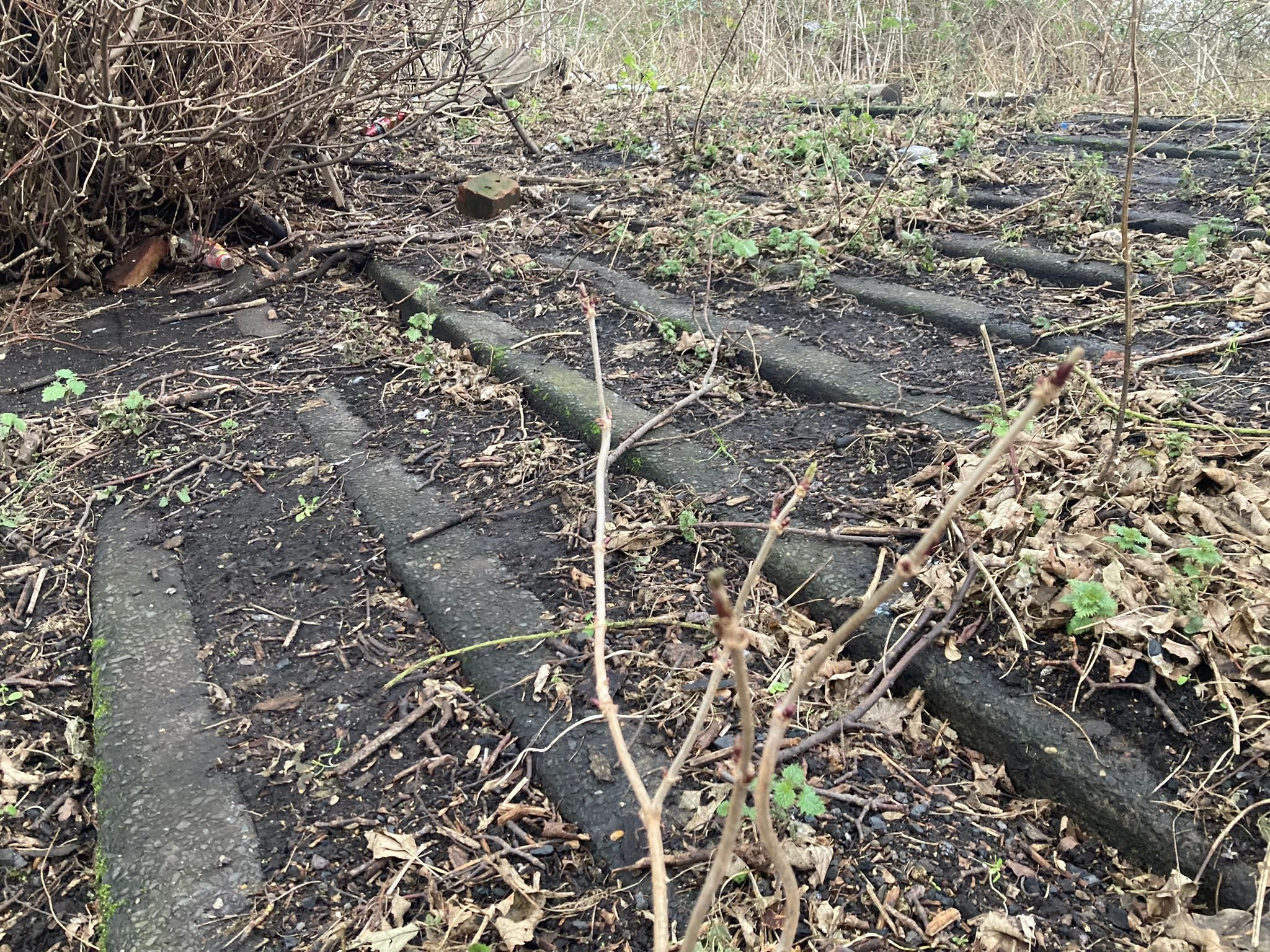Neglected no more: Plans to preserve part of Tigers’ history beneath shadow of MKM Stadium
THE OLD AND THE NEW: Part of Hull’s City’s original ground in the foreground, overlooked by its current home
By Angus Young
An ambitious heritage project is being launched aimed at preserving what remains of Hull City’s original Anlaby Road ground.
Led by the Hull City Supporters’ Trust, it could see parts of an open terrace, where fans gathered more than a century ago, being exposed again, cleaned up and made safe.
Formed in 1904, City initially played friendly matches at The Boulevard before switching to a pitch set out on the outfield of the cricket circle at Anlaby Road.
THE WAY IT WAS: An aerial view of the former football and cricket grounds
The success of the move led to the construction of a new ground on a plot of land next to the cricket circle in readiness for the club’s first season in what was then Division Two in 1906/7.
Today part of a stand from the old ground can still just be seen on the triangle of undeveloped land sandwiched between railway lines close to the current MKM Stadium. Moss-covered steps forming the original terrace are also visible in the undergrowth.
Hull City Supporters’ Trust director Geoff Bielby said: “Chris Smith first came up with the idea of preserving what is left of the Anlaby Road ground shortly after HCST was relaunched in 2015 when he was one of the inaugural directors.
“However, the idea lay dormant for some nine years until Chris’ recent co-option back on the board and now real progress is beginning to be made.”
The trust has already held positive talks with landowners Hull City Council as well as officials at the club.
Mr Bielby added: “Fortunately, we now have owners who are looking to develop the club’s infrastructure as well as the supporter base so we have finally got an environment within which our objectives might be achievable.”
The club played at the ground until the start of the Second World War, recording a record attendance of 32,000 for an FA Cup tie against Newcastle United.
However, during the war it suffered damage during a bombing raid and was eventually replaced by the modern purpose-built Boothferry Park, which opened 1946.
After the club’s move, the old ground continued to be used as a training facility and hosted City’s A team and junior team fixtures.
However, what Hitler’s Luftwafffe failed to achieve, British Railways – the new owner of the land – managed to complete.
PACKED: Hull City fans on the terraces in 1922
The nationalised railway company decided it wanted to reduce the number of level crossings in Hull by closing the Newington line between Hessle Road and the Cottingham South Junction by creating an excursion service loop between the Doncaster/Selby and Scarborough lines.
In doing so, it effectively carved a swathe through the playing surface and put an end to the ground hosting football-related activities.
The new railway route was created in 1965 and since then Mother Nature has gradually hidden what remains of Hull City’s original home.
PLANS: Where the MKM Stadium is located in relation to its forbears
Even the development of the current stadium in 2002 left it largely untouched thanks to its unique location wedged between two different railway lines.
HCST will be officially launching the heritage project on Friday, February 9 at an event in the Kingston Suite at the MKM Stadium, when three Hull City legends will be the trust’s principal guests.
Tickets are available on the Eventbrite platform and include a choice from the menu of the MKM’s award-winning street food dishes. The evening’s entertainment will conclude with an auction of Hull City memorabilia under the hammer of ex-Tiger John Hawley.







